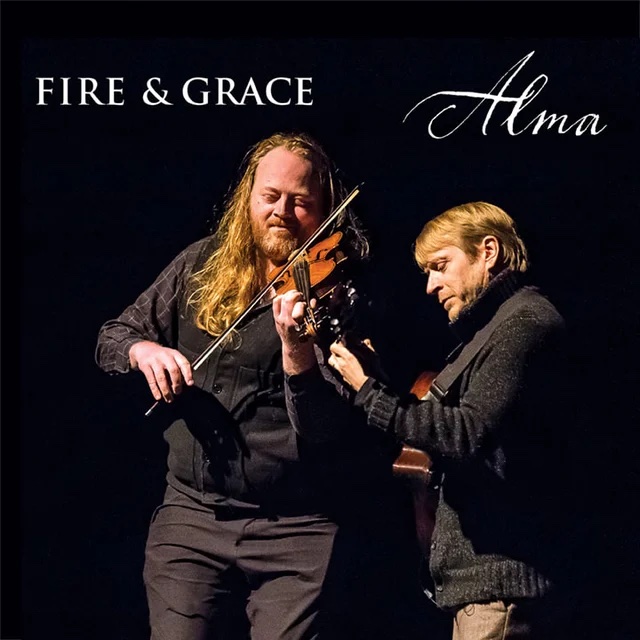by Stephanie Manning

“We were both moved by the deep beauty, profound passion and joy, and the soul that we found in this music,” Coulter said when the album was announced. The result, Alma (Spanish for “soul”), is full of folksy charm, combining Baroque music with melodies from Argentina, Spain, Italy, Germany, and Sweden.
From their outset as a duo, Huizinga and Coulter have defined their sound by combining the music of J.S. Bach with folk music old and new. Their debut album, Fire & Grace, begins with the Prelude from Bach’s Cello Suite No. 1, and Alma expands on that with Suite Español, which intersperses the movements of the entire Suite with traditional Spanish melodies. Presented as a single 30-minute segment, the piece flows seamlessly between the twelve brief movements. Though the duo have plenty of fun with the Baroque repertoire, it’s in the folk melodies — like the jovial “Mendiokerra” and the plaintive “Nana” — where they really shine.
Sandwiching the upbeat “Malagueña” between Bach’s Sarabande and the pair of Menuets, the duo proves they can make any stylistic shift sound natural, using crossfades and tempo changes to great effect. And there are plenty of interesting details to catch in the Bach sections themselves, where Coulter in particular is unafraid to deviate from traditional interpretations. These interesting arrangements and clever transitions make this piece a joy from start to finish.
Suite Español is only the half of it — with the album’s runtime just under an hour long, the duo have plenty more to showcase. Though many classical music listeners will be familiar with the pieces chosen, there is much to find intriguing. Piazzolla’s Libertango makes for a spirited opener, the intimacy of the recording accentuating every texture of Huizinga’s bow strokes and Coulter’s soulful tone. And in Albéniz’s warm and folksy Asturias, the duo frequently trade off the primary voice while contrasting the lyrical section with energetic bowing and strumming.
What makes the duo’s Vivaldi arrangements so compelling is that they’re not simply adapting the orchestral parts, but expanding on them. In “Summer” from The Four Seasons, Coulter goes beyond simply trying to replicate the sound of a string orchestra — in the Adagio e piano, swung rhythms combined with strum slaps inject more upbeat energy into the normally delicate movement.
Alma comes to a close with Roger Talroth’s wistful Tanya’s Tune, a lullaby of a piece that rounds out the album with a feeling of contentment. In their time working on the album, the duo have talked about their experiences rehearsing in nature and performing for friends and family. During Tanya’s Tune, it’s easy to picture Huizinga and Coulter, instruments in hand, entertaining a small, rapt audience in a concert under the stars.
Published on ClevelandClassical.com January 11, 2022.
Click here for a printable copy of this article



